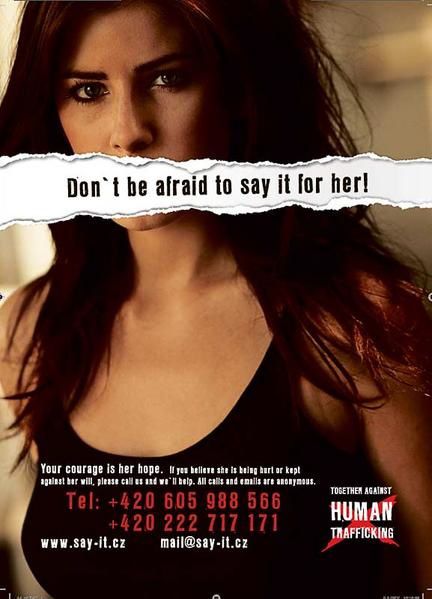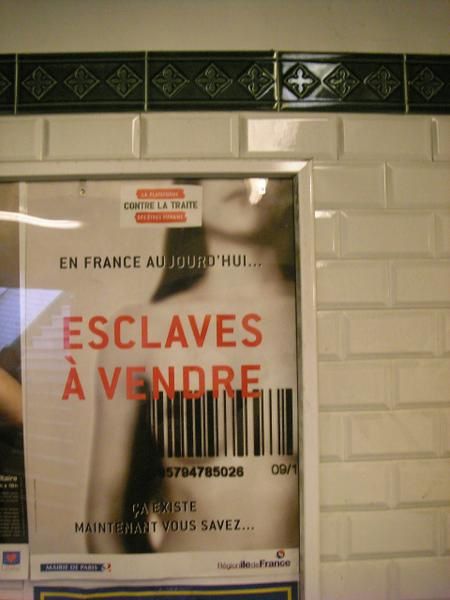 I will consider the most challenging critiques to anti-trafficking interventions, which, not surprisingly, come in an organised form precisely from those who are normally excluded from the debate: sex workers rights’ groups. This dissent is based on two main points.
I will consider the most challenging critiques to anti-trafficking interventions, which, not surprisingly, come in an organised form precisely from those who are normally excluded from the debate: sex workers rights’ groups. This dissent is based on two main points.
The first is a point of evidence from the ground: the classic trafficking idea that migrant women working in the European sex industry have been forced against their will to leave home and to work with sex is just not true for the large majority of cases.
Subsequently, the second point of dissent is that trafficking discourse and policies are based on a wrong distinction between voluntary sex workers and trafficked victims, and this distinction supports policies that have negative consequences both on young migrant women, potentially or actually selling sex, including those who are in a situation of heavy exploitation and abuse, and on all workers of the sex industry, including transgender people and men selling sex, and including European citizens.
 The second part of my paper introduces a materialist feminist analysis as produced by an alliance of prostitutes and non-prostitutes feminists between the mid70s and the mid80s in different contexts in Europe. This analysis can allow us to interrupt the crucial complicity supporting anti-trafficking interventions, which is the condemnation of sex work per se, which it turn is reproduced by the exclusion of sex workers’ analyses from the debate.
The second part of my paper introduces a materialist feminist analysis as produced by an alliance of prostitutes and non-prostitutes feminists between the mid70s and the mid80s in different contexts in Europe. This analysis can allow us to interrupt the crucial complicity supporting anti-trafficking interventions, which is the condemnation of sex work per se, which it turn is reproduced by the exclusion of sex workers’ analyses from the debate.

In the first part of my article, I describe the contours of the current migration of women to Europe and how these voyages come to be characterised in the ‘trafficking’ discourse that defines one side of the contemporary debate. Here I depict how migrant women’s own descriptions of what they are doing contrast with the characterisations of outsiders, particularly the gendered emphasis on passivity, ignorance and force. In the second part, I discuss the problematic politics of defining some women as victims and others as helpers. In the third part, I discuss the position that seeks to normalise sex work, bringing out the contradictions of working in a sector where illegality is the norm. The reproduction of stigma among migrants themselves and their belief that their sexual employment is temporary mean they lack the identification with their work that might stimulate their participation in labour activism and political associations. More importantly, most migrants do not enjoy a civil status in Europe that allows such participation. At the same time, government proposals for ‘systems’ to control the sex sector introduce problematical ‘sanitary controls’ for workers.
 The testimonies suggest that women migrants are actively engaged in using social networks to travel, often aware of the sexual nature of the work, and, like other migrant workers, variably able to resist the economic, social and physical forms of compulsion they face. Their status as ‘illegal’ migrants, without permission to work in Europe, is, for them, the single overarching problem to solve, and their irregular status, not sex, is the heart of the issue. In the conclusion, I argue that migrant women’s exploitation would be better understood and confronted if European supporters could leave their own debate behind, listen to migrants’ own voices and include migrant women as equal partners in any efforts to improve their situation.
The testimonies suggest that women migrants are actively engaged in using social networks to travel, often aware of the sexual nature of the work, and, like other migrant workers, variably able to resist the economic, social and physical forms of compulsion they face. Their status as ‘illegal’ migrants, without permission to work in Europe, is, for them, the single overarching problem to solve, and their irregular status, not sex, is the heart of the issue. In the conclusion, I argue that migrant women’s exploitation would be better understood and confronted if European supporters could leave their own debate behind, listen to migrants’ own voices and include migrant women as equal partners in any efforts to improve their situation.
...
The anxiety about ‘trafficking’ building up in the past ten years in Europe is part of a general trend focusing on transnational crime, penal law and citizen security expressed in the idea of a ‘Fortress Europe’ that must protect itself from invasion. In the discussion on ‘trafficking’, emphasis increasingly goes to hypothetical large-scale crime organisations dedicated to enslaving migrants, although the UN Crime Commission’s own report found little proof of such activity (CICP 2003). Rather, opportunist networks appear to form in particular situations where people see migration as a solution to their problems, networks composed of current, former and potential migrants.
Agustín Laura María (2005): ‘Migrants in the Mistress’s House: Other Voices in the “Trafficking” Debate.’ in: Social Politics, 12, 1, 96-117.







 Promised Land 2004
Promised Land 2004 Trade
Trade
 Sex Slaves
Sex Slaves The second part of my paper introduces a materialist feminist analysis as produced by an alliance of prostitutes and non-prostitutes feminists between the mid70s and the mid80s in different contexts in
The second part of my paper introduces a materialist feminist analysis as produced by an alliance of prostitutes and non-prostitutes feminists between the mid70s and the mid80s in different contexts in
 The testimonies suggest that women migrants are actively engaged in using social networks to travel, often aware of the sexual nature of the work, and, like other migrant workers, variably able to resist the economic, social and physical forms of compulsion they face. Their status as ‘illegal’ migrants, without permission to work in
The testimonies suggest that women migrants are actively engaged in using social networks to travel, often aware of the sexual nature of the work, and, like other migrant workers, variably able to resist the economic, social and physical forms of compulsion they face. Their status as ‘illegal’ migrants, without permission to work in
 “All nations that are resolute in the fight to end
“All nations that are resolute in the fight to end
